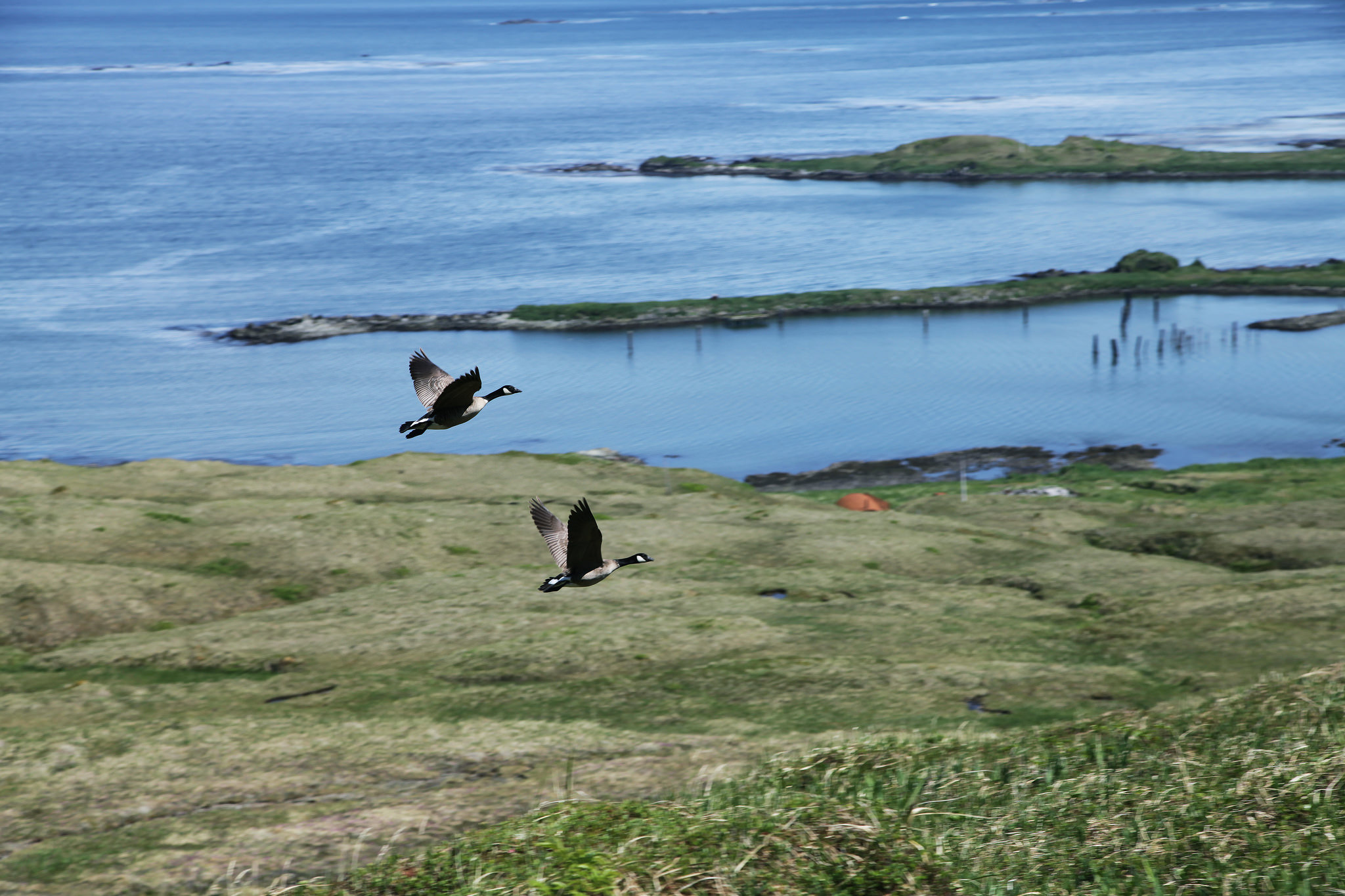The next time you’re tempted to complain about the irritations of airport travel and long flights, consider the Aleutian cackling goose. The bird not only nests farther north than most any other type of Canada geese, but it also makes one of the longest migrations, from its nesting sites in Alaska all the way to the Central Valley of California.
Each year, about a billion birds frequent the Pacific Flyway, a 4,000-mile route that stretches from the Bering Strait to Patagonia. More than 300 species rely on at least part of the flyway during spring and fall, and for many—including thousands of geese and numerous shorebirds like dunlins, dowitchers, and least sandpipers—California’s Central Valley is a linchpin along the way.
After years of drought across the western United States, however, wetlands along the vital pathway began to dry up. So in 2014, the Nature Conservancy came up with a solution: pop-up wetlands, furnished by Californian rice farmers.
California devotes the second-most amount of acreage to rice in the nation, bringing in $5 billion for the state’s economy. The growing season runs from spring to fall, and the majority of the state’s farmers re-flood their fields after the harvest, attracting birds with wet habitat and leftover grain—for a few months, at least. A recent piece in Comstock’s magazine explains how the Nature Conservancy program spurs farmers to continue providing this crucial habitat through the migration season:
Farmers typically drain the water in late January so the soil has time to harden for the upcoming season. Could they be encouraged to keep their fields flooded a few inches into February and March, to provide surrogate wetlands for birds traveling north along the Pacific Flyway? The Nature Conservancy posed this question when piloting its Bird Returns program in 2014.
Bird Returns essentially rents fields from farmers on a short-term basis, using a reverse auction: Farmers place a bid for what they want to be paid per acre to keep their fields flooded. Sellers with the most reasonable bids and conducive fields are enrolled. The program relies on data from the eBird app, a citizen science project where birders record their sightings for researchers to use in mapping where habitat is most needed.
During the pilot program in 2014, more than 180,000 waterbirds used wetlands created by about 10,000 acres of riceland.
The pop-up bird habitat has become crucial. Natural wetlands now supply just a third of food resources for waterfowl in the Central Valley, while rice fields account for nearly 60 percent—the equivalent of an estimated $1.5 billion in wetlands-provided food.
“If birds come here and there aren’t any flooded fields, they may not have enough habitat to survive,” says Brian Stranko, director of The Nature Conservancy’s water program. “But if we pay farmers to flood their fields when the birds want to be here, then we can create the habitat that these birds need.” The Bird Returns program has nearly 4,000 acres enrolled for this year.
Bird Returns isn’t the first time Californian rice farmers have harnessed markets in a way that has helped the state’s waterfowl. A decade before the program, markets helped transform rice farmers into game-bird conservationists. At the time, the standard practice after harvest was to burn rice straw from the fields, the cheapest way to clear the land for next year’s planting. But when California passed a law to significantly limit burning—and the smoke plumes that hurt air quality and made rice growers zero friends—many farmers instead developed a new sideline in duck hunting. Rice farmers took to flooding fields during the fall to provide habitat and draw in the waterfowl, earning anywhere from $1,500 to $5,000 per hunter for access rights over the course of a season.
The reward mechanism of markets has been key for Bird Returns as well, allowing conservation priorities to dovetail with agriculture uses. As farmer Michael Bosworth put it to Comstock’s: “People wouldn’t be doing it if they weren’t making money.”
The prolonged California drought still poses significant challenges—a recent study based on satellite measurements found that surface water availability in Sacramento Valley wetlands has been steadily declining for three decades. Market solutions have the potential to help overcome the problems created by water scarcity, and not just when it comes to migratory birds. California’s water markets have facilitated beneficial trades since the early 1980s, but unfortunately, the fragmented and slow bureaucracy that governs water trading in the state means that much more could be done. Reforms to water markets could help the state meet its growing and disparate demands and allocate the resource where it’s needed most, whether urban areas, thirsty cropland, or dwindling fish streams.
In the Central Valley, the Nature Conservancy helped turn rice farmers once derided as air polluters into migratory-bird conservationists. Markets have the potential to align incentives in ways that result in both environmental and economic benefits—showing that free market environmentalism isn’t only for the birds.




